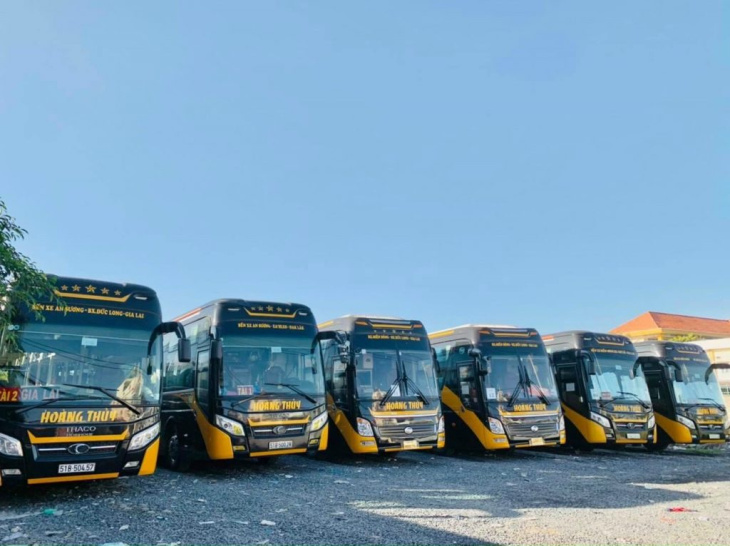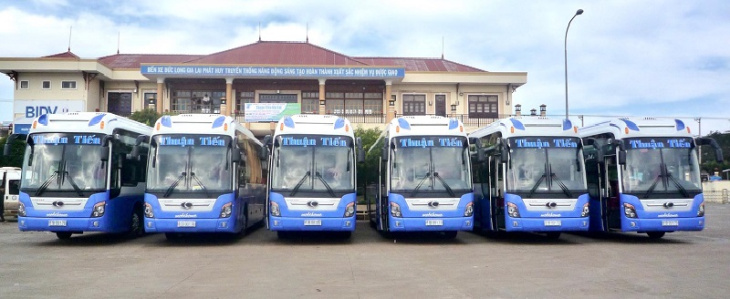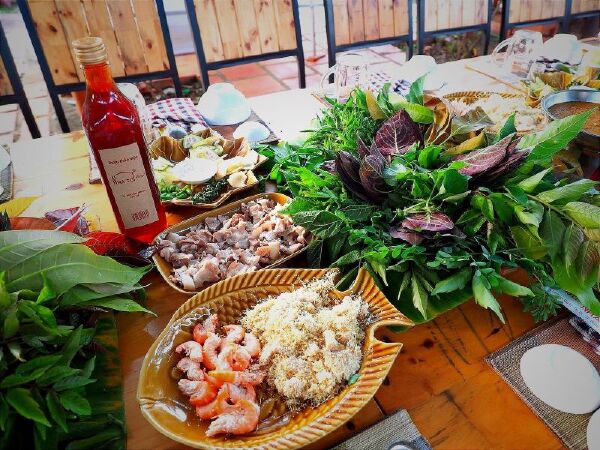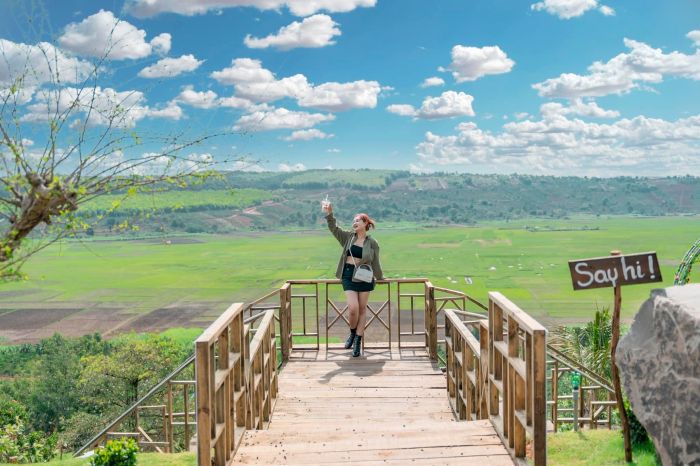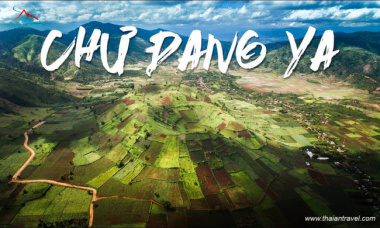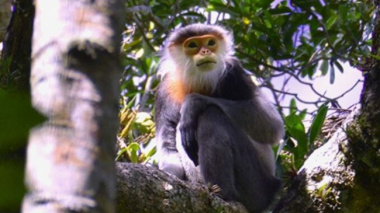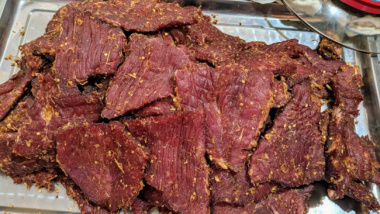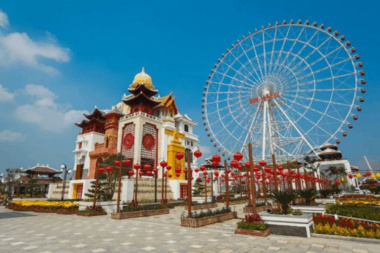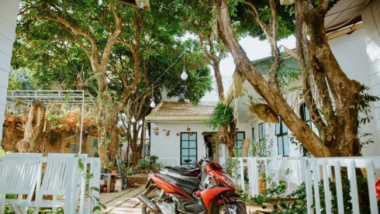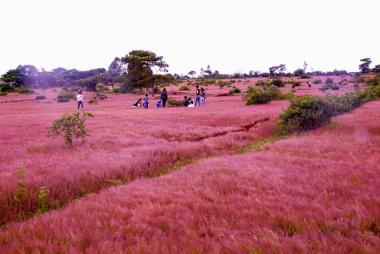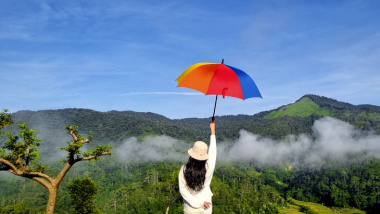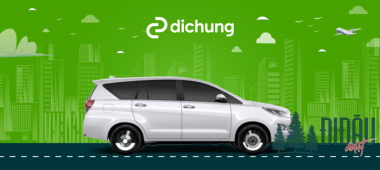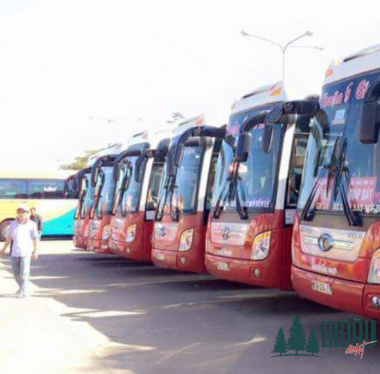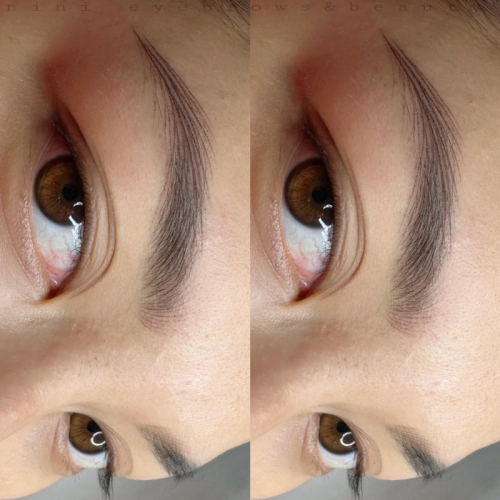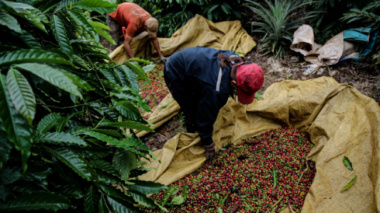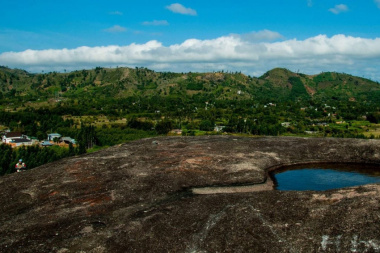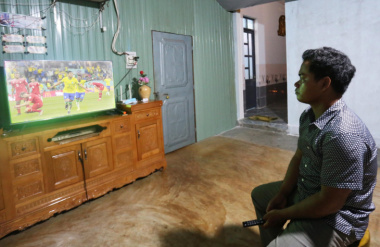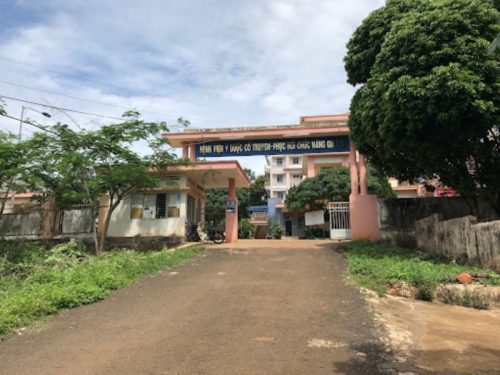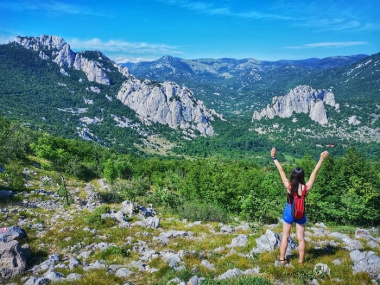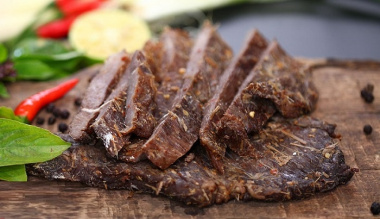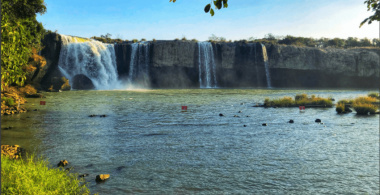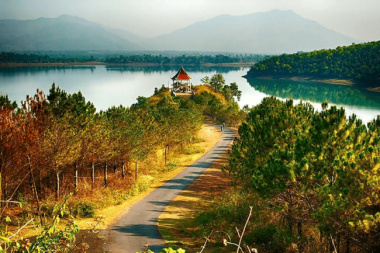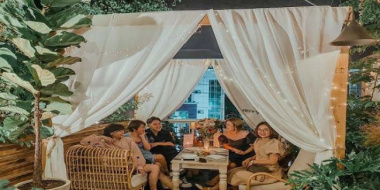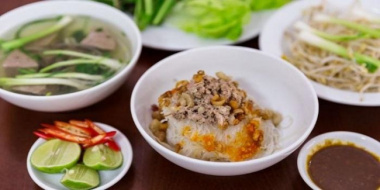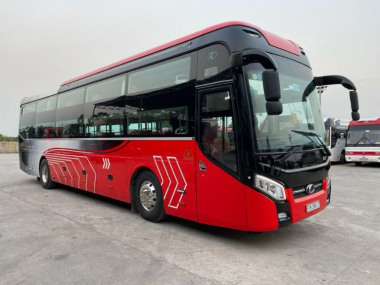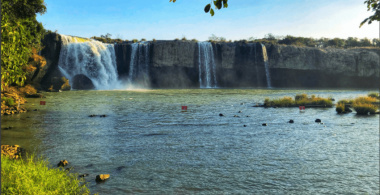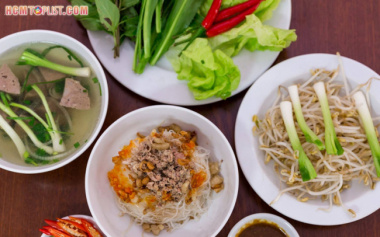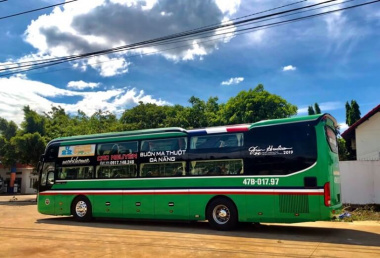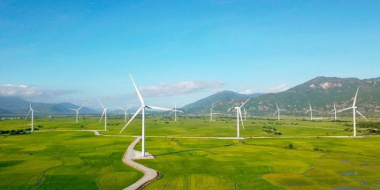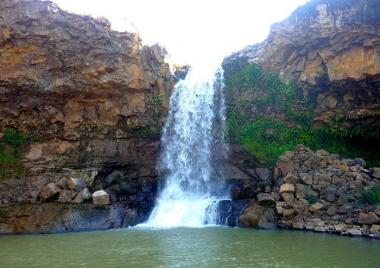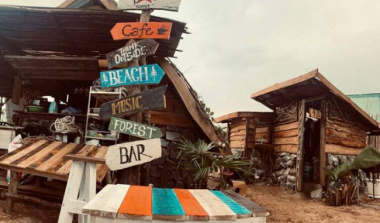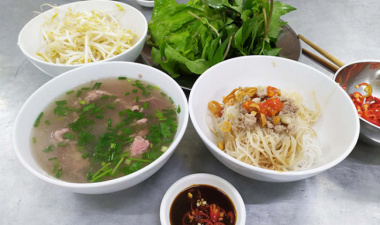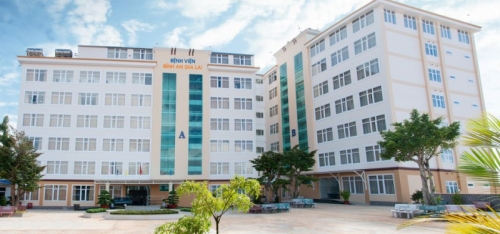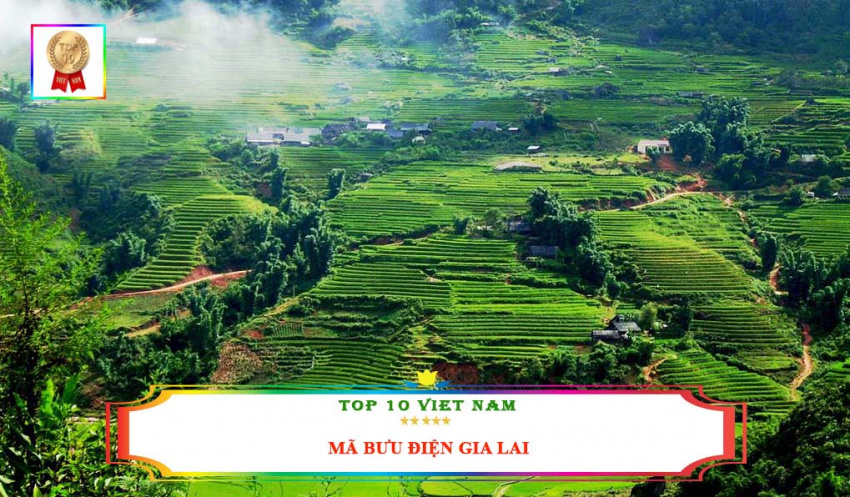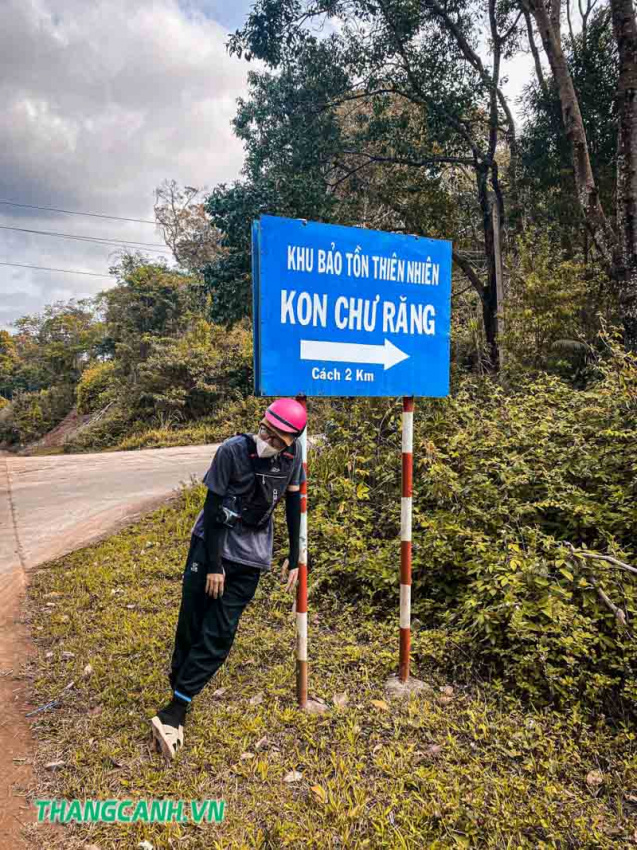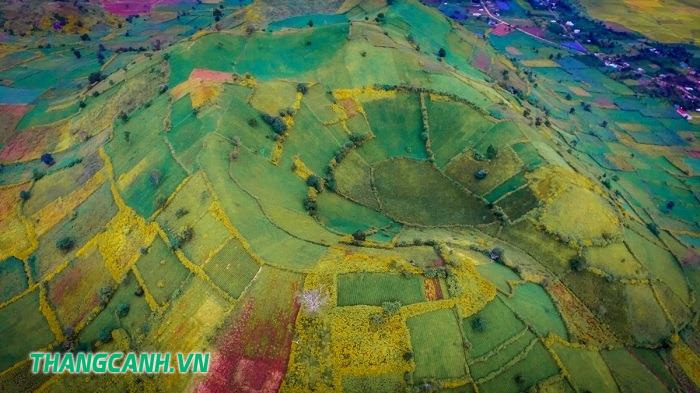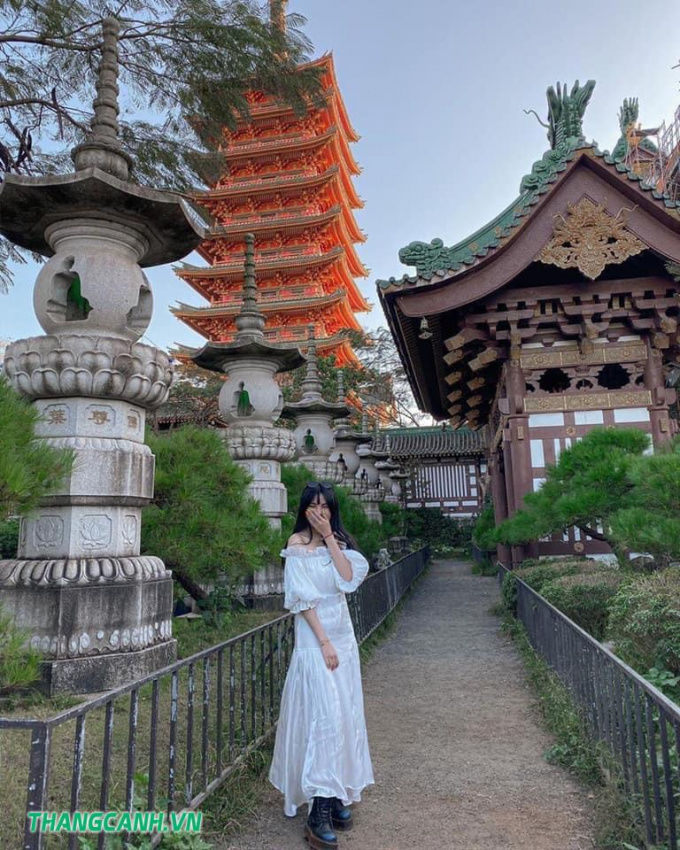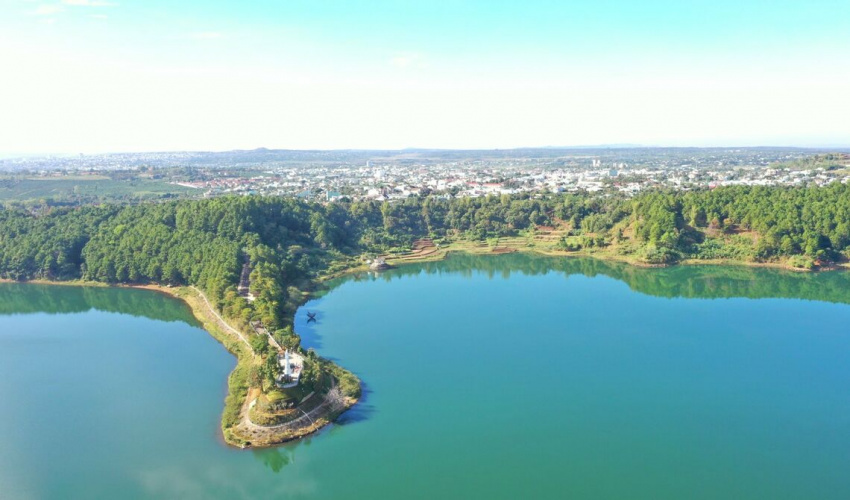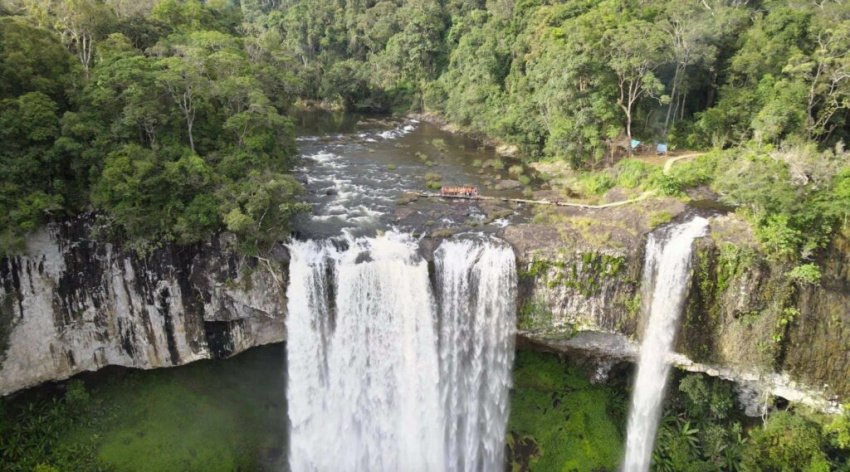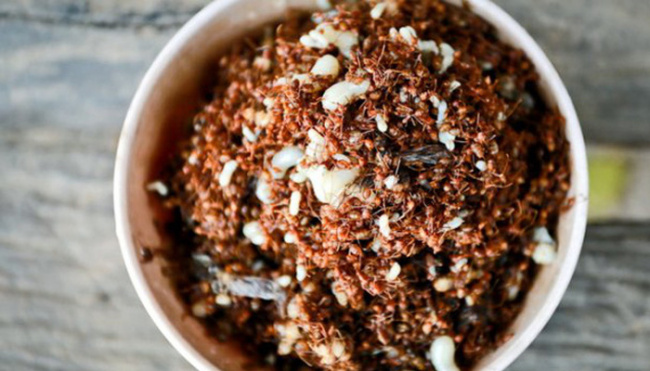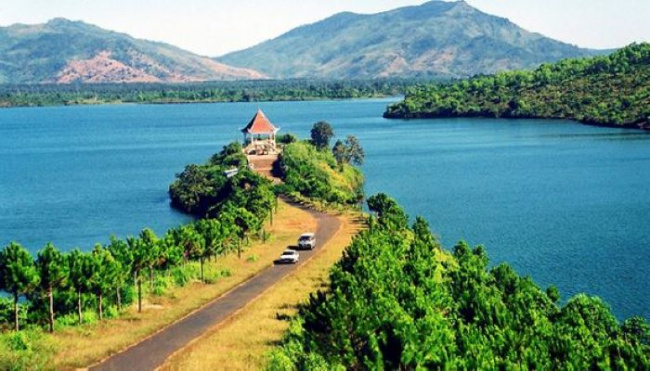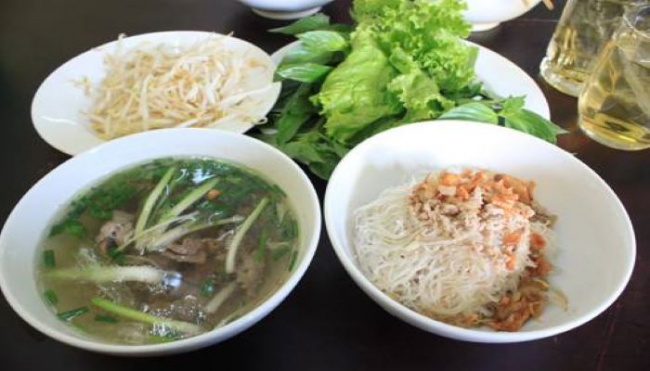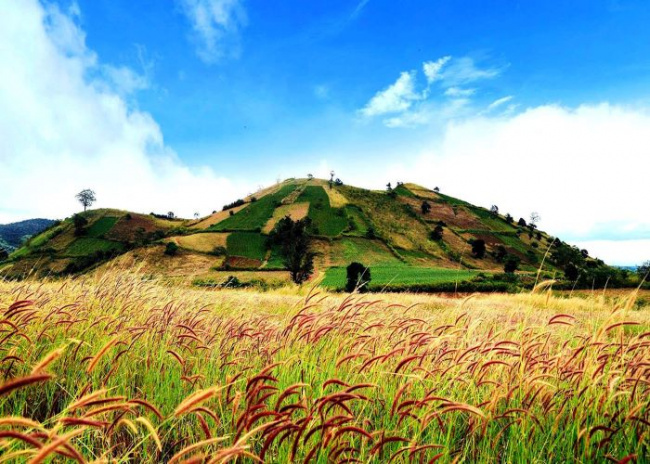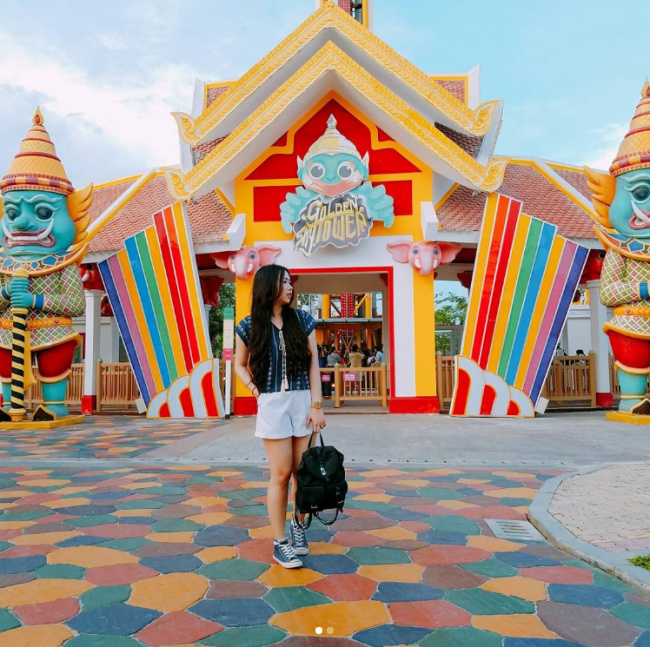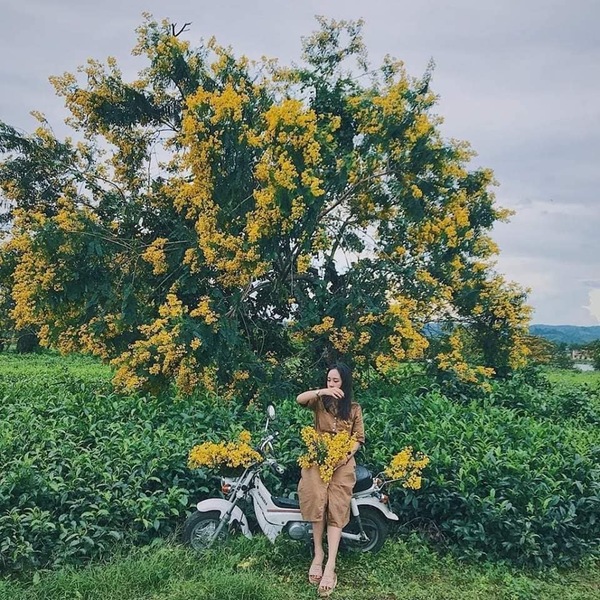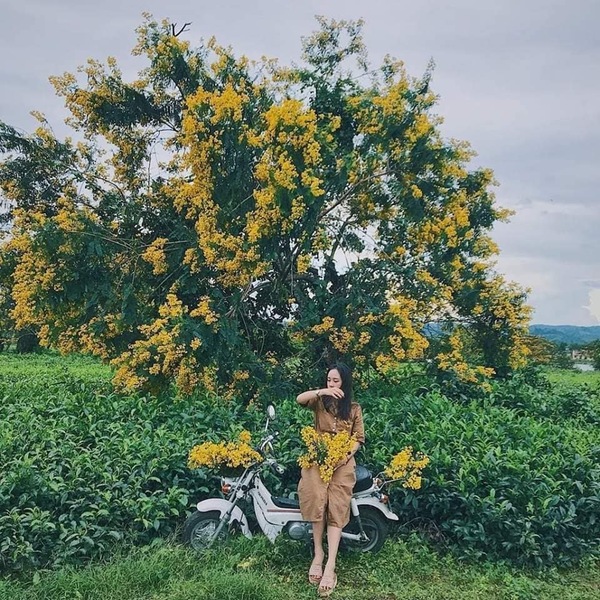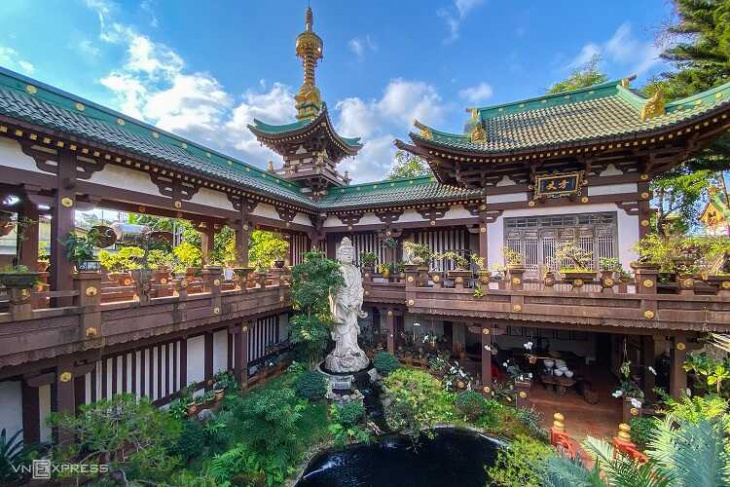Gia Lai Province, Vietnam
- How to Get to Gia Lai
- Capital City
- Famous Places in the Gia Lai Province
- Chu Se District
- An Khe
- Ayun Pa
- Main Attractions
- Nui Lua Chu Dang Ya
- Sea Lake
- Minh Thanh Pagoda
- Kon Ka Kinh National Park
- Special Events
- Activities near Gia Lai Province
- Latest in Gia Lai Province
- Minh Thanh Pagoda – Pleiku
- Pleiku, Vietnam
- Kon Ka Kinh National Park – Gia Lai Province
Covering a total area of about 15,495 sq km (5,983 sq mi), Gia Lai is the second largest province in Vietnam. Positioned in the heart of the Central Highlands Region, it’s is renowned for its majestic beauty and wild landscapes that have become irresistible to adventure travelers.
Famous for its capital, Pleiku, travelers in the Gia Lai will have the chance to explore the local history, agriculture, and ethnic culture as they journey through the province.
How to Get to Gia Lai
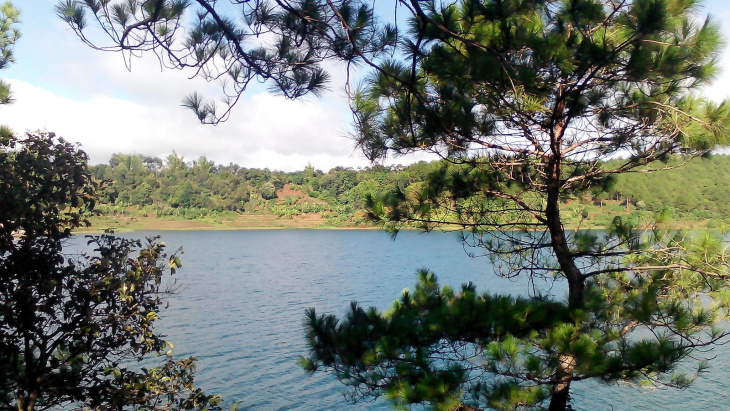
Bien Ho in Pleiku. Photo: NguyenTrung
Gia Lai is a unique province due to its large size. With so much to explore, surprisingly, not much has been developed. Instead, a majority of the natural landscapes have been left untouched and are only frequented by locals. Most cities and towns in the province are quite isolated from the rest of the country, however, Gia Lai does have one major city – Pleiku.
Pleiku, the capital, sits 500 km (310 mi) to the west of HCMC and 1,094 km (680 mi) south of Hanoi, the country’s capital. Major coastal cities like Nha Trang and Hoi An (Hôi An) are still hours away by car. Not all travelers plan to road trip their way around Vietnam and reaching the Gia Lai Province by car or bus isn’t ideal for everyone’s timeline.
Instead, for those coming from outside of the Central Highland Region, domestic flights to Pleiku are available from both Hanoi and HCMC. Flying is the fastest way to reach Pleiku and many domestic airlines have affordable prices for one-way and round trips to the province.
History
Historically, Gia Lai Province is somewhat of an enigma. Apart from wartime, most of the province’s history is lesser-known internationally and is fiercely guarded by both locals and the Vietnamese government. Centuries before the Vietnam War, the first people recorded living in Gia Lai were from the Jarai and Bahnar ethnic groups. In fact, “Gia Lai” comes from the language of the Jarai people.
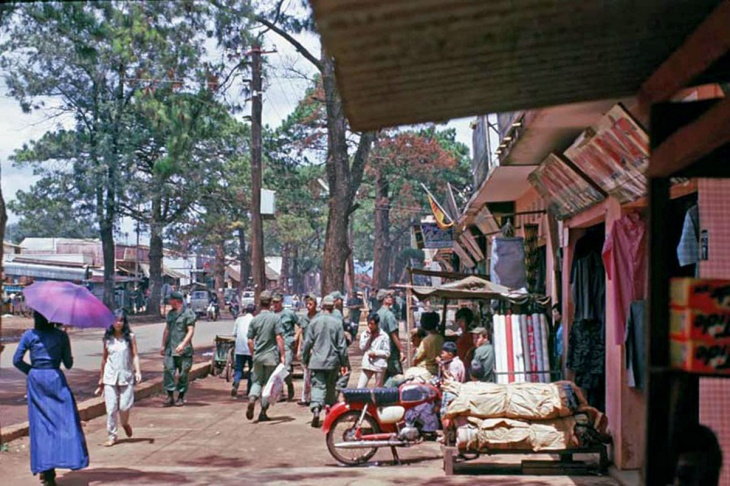
Pleiku in the 1960s. Gia Lai Province, Vietnam. Photo by: manhhai.
These two groups are indigenous to the area and their culture is an integral part of the province’s and region’s identity. Aside from creating the foundation blocks for culture in the Central Highlands, the Bahnar and Jarai people chose to support South Vietnamese and foreign forces during the Vietnam War. Ultimately surviving the conflict, ethnic culture in Gia Lai is still thriving today.
During the war, Gia Lai’s capital city was once used as an Air Force Base by South Vietnamese and US Forces. The biggest conflict that happened in Pleiku was Operation Rolling Thunder, which began in March 1965 and lasted for 3 years. Heavily bombed by North Vietnam forces, Pleiku was destroyed.
When the People’s Army of Vietnam took control of Pleiku, the damage was so severe that they ultimately abandoned the area. It wasn’t until the 1980s that Pleiku was remapped, and the old base was turned into what is today the Pleiku Airport. Converting the old base into a functioning airport helped bring tourism to the province and it turned Pleiku into a vacation destination.
Fun Facts
- Tea and coffee are the main agricultural crops in Gia Lai.
- In total, there are 39 ethnicities living in the Gia Lai Province.
- As of 2019, there are an estimated 1,513,847 people living in the Gia Lai Province.
Capital City
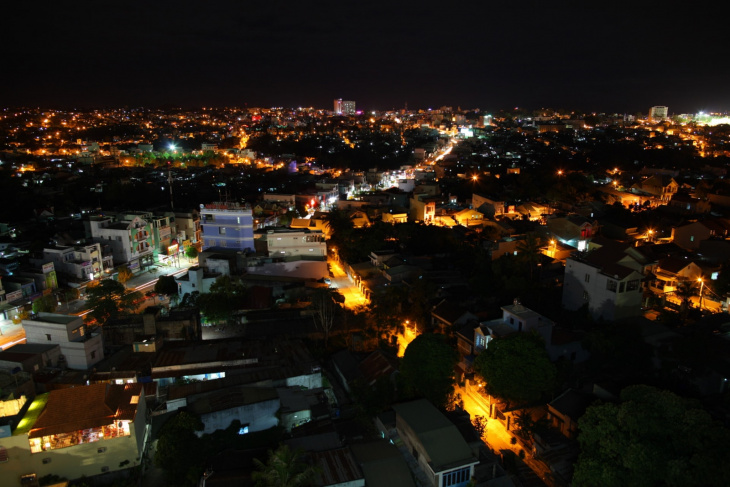
After dark in Pleiku City. Photo: [Tycho]
In the northern part of the province, Pleiku has become a famous destination that travelers have nicknamed the “Gateway to the Central Highlands”. A historic city, Pleiku was an old air force base turned into a capital city and tourist destination. Nestled between verdant peaks and narrow ravines, the city provides a stunning escape into nature.
Frequently used as a base camp, travelers should spend a few days exploring Pleiku. There are various attractions throughout the city as well as just outside of its boundaries. Although damaged and rebuilt, war history is prominent in the city. With the old airbase functioning as the airport, travelers should rely on the local museums to learn more about Pleiku during the war.
Other attractions in the city include the Sea Lake, Minh Thanh Pagoda, Ham Rong Peak, and transportation to the Kon Ka Kinh National Park. Since becoming a well-known tourist destination in the Central Highlands, Pleiku has had the chance to develop its tourist industry. Within the city limits, there are a few hotels that have been built to provide travelers with modern amenities.
Usually, the hotels are small but comfortable. Pleiku’s best hotels are the Elisa Hotel, Hani House, and Hoai Thuong Hotel.
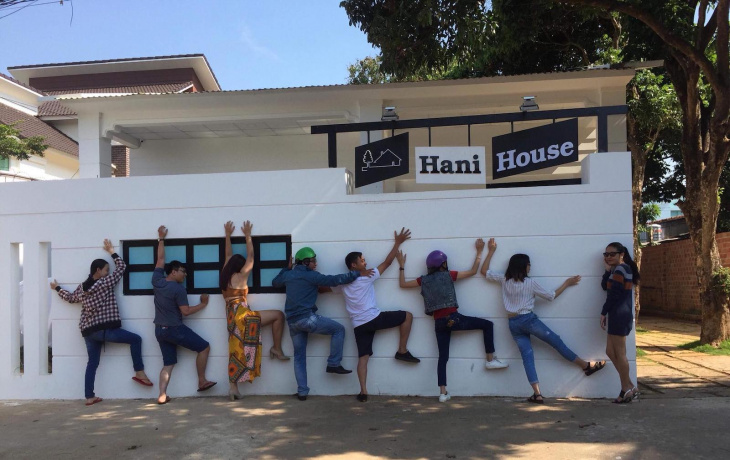
Hani House. Photo: Hani House & More
The restaurant scene in Pleuiku is still developing being that the city is so remote. International cuisine is not standard in the city and most eateries will serve Vietnamese delicacies instead. This gives travelers a chance to learn more about the local culture and experience the diversity of Vietnamese food. Ca Go 81, Passata Bistro, and Nam Restaurant are the best places to eat in Pleiku.
Famous Places in the Gia Lai Province
When venturing out of Pleiku, tourists will find that most of Gia Lai is extremely remote and isolated. Destinations that are outside of Pleiku will only be accessible by road and for some, local guides are recommended to ensure that travelers don’t get lost. For those willing to go off the beaten path, the best places to visit are the Chu Se (Chu Sê) District, An Khe (An Khê), and Ayun Pa.
Chu Se District
Boasting spectacular waterfalls and deep caverns, Chu Se District has become an eco-tourist’s paradise. A remote district, Chu Se is 44 km (27.3 mi) outside of Pleiku. Attractions in the district include access to Ham Rong Mountain, Phu Cuong Waterfall, and the Chu Se Rubber Plantation. Visitors can tour the area on their own or use a local guide to learn more about the landscape.
An Khe

The center of An Khe Town. Photo:
During the war, An Khe was a base for the US Army called Camp Radcliff. Today, the town is much more local and home to a quiet community. One of two towns in the province, visitors travel to An Khe to learn more about the country’s past and explore its unique landscapes. The hilly terrain around the town is great for hiking and homestays are a common way for visitors to spend the night.
Ayun Pa
The second town in Gia Lai is Ayun Pa, previously known as Cheo Reo. Somewhat off the beaten track, Ayun Pa is a necessary rest stop for tourists driving through the province. While there isn’t much to do in the town, popular destinations include visiting the rice paddies, river, waterfalls, and plains.
Main Attractions
Closer to Pleiku City, there are plenty of attractions that have become quite popular with tourists. Varying from natural Nui Lua Chu Dang Ya, Sea Lake, Minh Thanh Pagoda, and Kon Ka Kinh National Park. While all of these destinations are open to visitors, it’s highly recommended to hire a local guide for a few.
Nui Lua Chu Dang Ya
Once an active volcano, Nui Lua Chu Dang Ya is now a patchwork of verdant fields. Rising above the valley, tourists travel for the stunning views and to learn more about the local agriculture. A small community at the base of the volcano can provide food and shelter to guests or tourists can simply take a day trip to the area. Nui Lua Chu Dang Ya is less than 45 minutes away from Pleiku.
Sea Lake

Quiet garden at the Sea Lake in the Gia Lai Province. Photo: Lawrence Sinclair
Perhaps the most popular attraction in Gia Lai Province is the Sea Lake, which is just 6 km (3.7 mi) outside of Pleiku. Activities at the lake include boating, swimming, or hiking and guests can stay the night lakeside in the Bien Ho Commune. With an extensive shoreline, Sea Lake is favored for its mountain views and colorful sunsets.
Minh Thanh Pagoda
Close to the Pleiku City Center, Minh Thanh Pagoda sits on a hill overlooking the landscape. A Buddhist place of worship built in the 1960s by Thich Giac Dao, guests can participate in a daily tour, worship service, or stroll through the gardens.
Kon Ka Kinh National Park
Technically, the entirety of Kon Ka Kinh National Park isn’t located in the Gia Lai Province. While much of the national park sits in Kon Tum Province, it’s so remote that most visitors will travel to Pleiku before heading further north. The Pleiku Airport is the only way for visitors to get to the national park by plane.
However, once in Kon Ka Kinh, visitors will be able to experience the hidden side of Vietnam’s landscape. The extreme remoteness of the national park has protected its ecosystem and allowed its biodiversity to thrive. Rare species that live in the park include the Indochinese tiger and yellow-cheeked gibbon.
While the rare animals remain elusive, park visitors can still enjoy viewing the more common flora and fauna in the area. Kon Ka Kinh National Park is open to all visitors, though it is highly recommended that tourists book a tour of the area with a local guide because the terrain is so remote. Transportation to the national park from Pleiku is frequently included in tour packages.
Special Events
Festivals in the Gia Lai Province are closely tied to the ethnic culture of the Bahnar and Jarai people. One of the traditional celebrations held during the 12th to the 3rd lunar month is the Buffalo Stabbing Festival. Very important to the local communities, a buffalo is sacrificed to God during the festival, followed by a feast using the creature’s meat.
Much less gruesome, the Bul Rice Festival is one of the newest traditions in the Gia Lai Province. Held in January, the festival celebrates the cultivation of rice and worships La Pom, the Rice God.
Weather
Tourism in Gia Lai Province is closely tied to the weather because much of the province is dominated by remote landscapes. The wet season, which starts in May and lasts until October, is the least popular time to visit due to heavy rain and high temperatures. Instead, tourism in Gia Lai picks up from November to April, during the dry season.
While there may be a few tourists lingering in the off-season, travelers who are planning on participating in outdoor activities should be very careful to watch the weather. Hiking during the rainy season can be dangerous as trails are frequently washed out or very muddy. The dry season is much safer and can be an overall better time for tourists to see Gia Lai’s natural wonders.

Dragon Mountain in the Gia Lai Province. Photo: Gavin White
Untouched, rustic, and gorgeous, Gia Lai Province is on the cusp of becoming Vietnam’s newest vacation hotspot. Still relatively unknown, this Central Highlands province is one that you don’t want to miss as it takes travelers away from the tourist crowds and into the country’s rural communities and quiet landscapes.
Activities near Gia Lai Province
National Parks:
Towns:
Latest in Gia Lai Province

Minh Thanh Pagoda – Pleiku
Located on a hill about 2km (1.2 miles) from Pleiku’s city center, the Minh Thanh Pagoda…
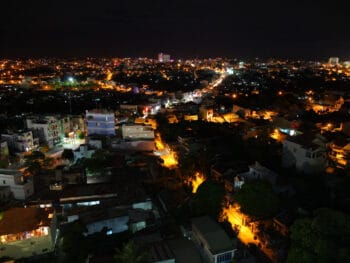
Pleiku, Vietnam
Nestled in Vietnam’s Central Highland Region, Pleiku is well-known amongst international travelers for once being the…

Kon Ka Kinh National Park – Gia Lai Province
Significant to the Gia Lai and Kon Tum Provinces, Kon Ka Kinh National Park not only…
View more Gia Lai Province articles
Đăng bởi: Nguyễn Thị Duyên



